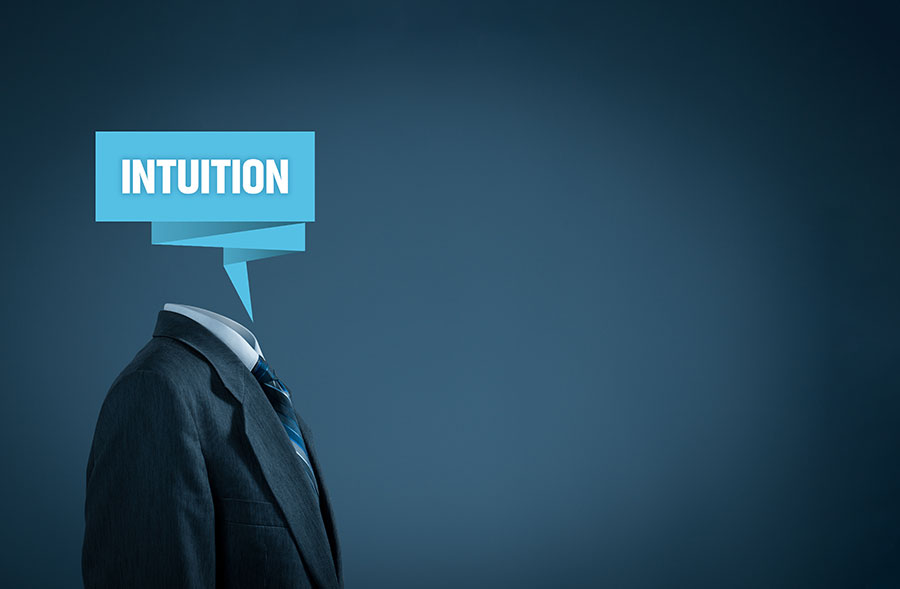Do you trust your intuition?
4 steps to help you flex that muscle.
Story: Jill Sylvester
Do you often second-guess yourself when faced with a decision, worrying that the choice you’re about to make isn’t optimal or right?
In order to make decisions that are right for you and align with your individual truths, you need to trust your intuition. Doing so allows you to act and choose from a place of confidence, self-assuredness and self-possession, knowing that you are operating on the level of your highest self.
But getting to a place where you can let go and trust that your intuition is right is a learning process that can take lots of time and practice. Here are four steps to guide you:
Start small
One exercise I give to clients to start flexing their intuitive muscle is to begin checking in with themselves, on a daily basis, around the seemingly insignificant choices they make. Food choices are one example to which all of us can relate. Think of breakfast. Is your choice of what to eat driven by external factors, such as what is supposed to be good for you or what your favorite fitness person on Instagram is eating? In the absence of that external input, do you really know what breakfast is best for you?
If not, you’re not alone. It’s easy to become bewildered by the many choices out there—or the lack of choices. What works best for others is not necessarily what works best for you, and that can be frustrating.
Switch out of autopilot
So, I have my clients switch from autopilot mode, where it’s easy to be swayed by other people’s choices, to slowing down and getting to know themselves better by asking, “What does my body need at this time?”
Here’s where discernment comes in. Your lower self, or what I call the “gremlins,” will guide you toward sugar and an overload of carbs, saying you need them, you deserve them, you will feel so much better if you eat junk.
Your highest self, that wise, even-keeled, patient-sounding voice, knows better than this. Your highest self knows you don’t need those types of foods to arrive at a place of feeling well. So, what do you need? This is the direction in which you want to go. This is the voice that you want to hear.
It is the voice of your intuition. The one that knows.
Check in with yourself
Another exercise I have clients do is to check in with themselves when somebody asks them to do something. Let’s say, for example, you are asked to attend an event, go out to eat or take a walk. Your knee-jerk reaction might be to automatically reply yes or no because you think you should or shouldn’t for reasons that have more to do with the other person than with yourself.
Stop and instead ask yourself, “Do I really want to do this?” Tell the person you’ll get back to them and consider your needs and what feels right. Check in with your body. Do you feel expanded, open, relaxed, contributing to a yes feeling? Do you feel tight, agitated, restricted, leaning towards no? Take a few minutes to read the energy in response to your question and then make your decision based on what feels best for you.
In both of these cases—food choices and a request or invitation—it can be easy to let the gremlins take over. Their loud, sucker-punching voice tells you that you aren’t enough, that you are “less than,” that you won’t achieve what you set out to do anyway. It can be so loud that it drowns out the voice of your intuition.
But your intuition is always there. It all comes down to trusting the voice that holds you back from achieving greatness and listening to the voice that operates on a higher frequency—the one that roots for your growth and evolution.
Practice
In addition to pausing to think, you can practice by becoming still and learning to meditate. The simple act of going within to make any decision, no matter how small it may seem, strengthens your ability to do so for the big decisions.
Your body also will give you cues to help point you toward your intuition. Your stomach might ache or burn as you contemplate eating those carbs. You might suddenly feel tired or tense when your friend invites you out on a walk when you don’t really have time for it. Eventually, you will come to recognize and trust these signs.
Try it yourself and see. The more you choose to trust yourself, the more you take the time to be consistent in your practice, the greater the rewards will be.
If you want to learn to develop your intuition from an interesting theory to a practical application, start small, with day-to-day choices, and take it one step at a time.

About the writer → Jill Sylvester is a licensed mental health counselor and wellness coach, and author of “Trust Your Intuition: 100 Ways to Transform Anxiety and Depression for Stronger Mental Health.”

